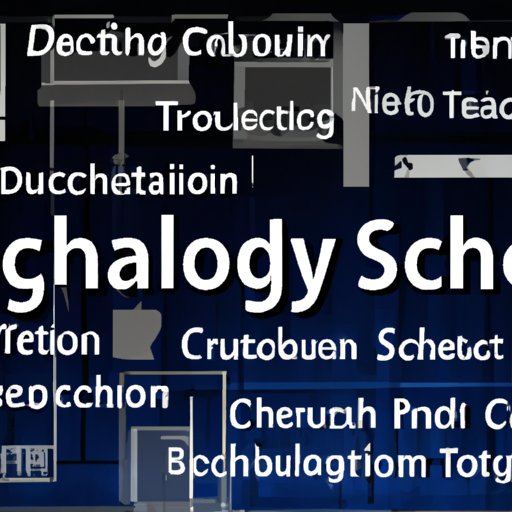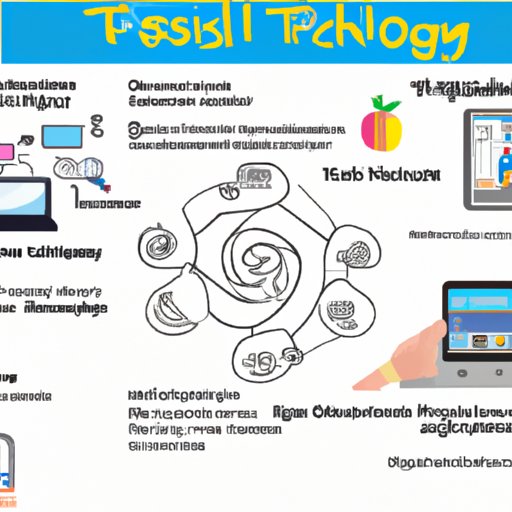Introduction
Technology education plays an increasingly important role in today’s schools. Technology is no longer seen as a mere tool but rather as a powerful educational resource that can be used to help students develop the skills they need to be successful in this digital age. As such, there is a great need for qualified technology teachers who can effectively use technology to facilitate student learning.

Qualifications and Skills Necessary to Become a Technology Teacher
In order to become an effective technology teacher, there are certain qualifications and skills that must be met. First and foremost, candidates should have a minimum of a bachelor’s degree in either education or a related field. Additionally, they should possess knowledge of the various software programs and hardware components that are commonly used in technology classrooms. Experience teaching in a classroom environment is also highly beneficial, as it helps to instill confidence in the teacher and ensure that they are able to effectively manage the classroom.
Staying Up-to-Date with the Latest Technological Advancements
In order to be a successful technology teacher, it is essential to stay up-to-date with the latest technological advancements. This ensures that teachers are able to effectively incorporate new technologies into their lessons, which can help engage students and increase their understanding of the material. To stay informed, teachers should regularly attend professional development sessions and seminars, read tech-focused blogs, and subscribe to industry newsletters. Additionally, teachers should take advantage of free online courses offered by technology companies, such as Microsoft and Apple, to gain further insight into the latest technologies.
Incorporating Technology into Lesson Plans
Incorporating technology into lesson plans is a great way to engage students and increase their understanding of the material. When creating lesson plans, teachers should focus on using technology to support and enhance the curriculum, rather than relying solely on technology to teach the material. Additionally, teachers should consider ways to use technology to foster collaboration between students and create opportunities for them to express their creativity. Some tips for effectively incorporating technology into lesson plans include: providing hands-on experiences, providing instruction on how to use the technology, and offering a variety of activities that involve technology.
Examples of successful lesson plans that incorporate technology include having students create digital stories, use a 3D printer to create a model of a structure, and use robotics kits to build robots. By leveraging these types of activities, teachers can provide students with engaging and meaningful learning experiences.

Benefits of Incorporating Technology into the Classroom
Incorporating technology into the classroom has numerous benefits for both teachers and students. For starters, it can improve student engagement by providing them with exciting and interesting activities that can help keep their attention. Additionally, it can increase student learning by allowing them to explore topics in more depth and giving them access to more resources. Finally, it can enhance collaboration between students by providing them with tools to work together on projects and share their ideas.

Best Practices for Teaching with Technology
When teaching with technology, it is important to establish boundaries and set expectations for students. Teachers should make it clear what type of behavior is expected in the classroom and provide a safe and secure environment for students to explore technology. Additionally, teachers should provide support for students when needed and encourage them to ask questions and seek help when needed. Finally, teachers should strive to create a balance between technology use and traditional teaching methods.
Conclusion
To become an effective technology teacher, it is important to possess the necessary qualifications and skills, stay up-to-date with the latest technological advancements, and incorporate technology into lesson plans. Doing so can help improve student engagement, increase student learning, and enhance collaboration. Additionally, establishing boundaries, setting expectations, and providing support are all important best practices for teaching with technology. With the right qualifications, strategies, and best practices, anyone can become a successful technology teacher.
(Note: Is this article not meeting your expectations? Do you have knowledge or insights to share? Unlock new opportunities and expand your reach by joining our authors team. Click Registration to join us and share your expertise with our readers.)
